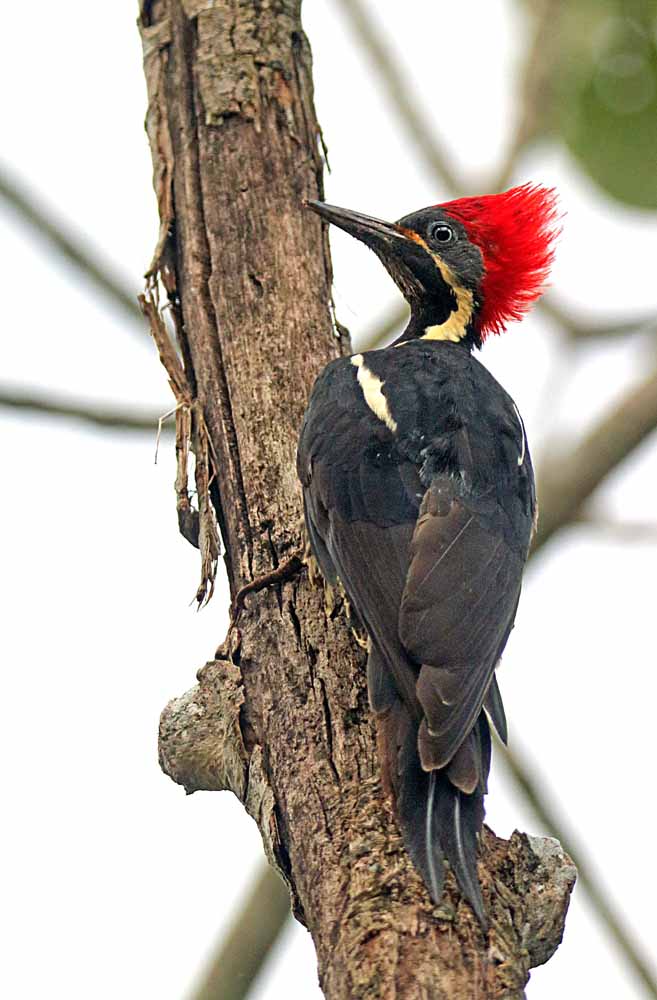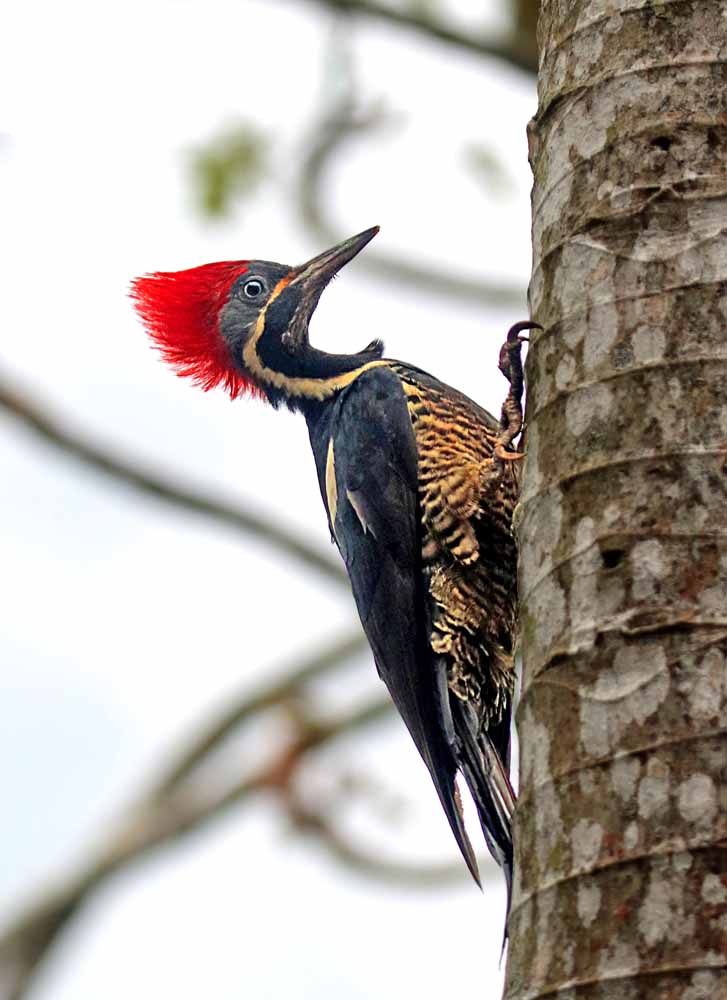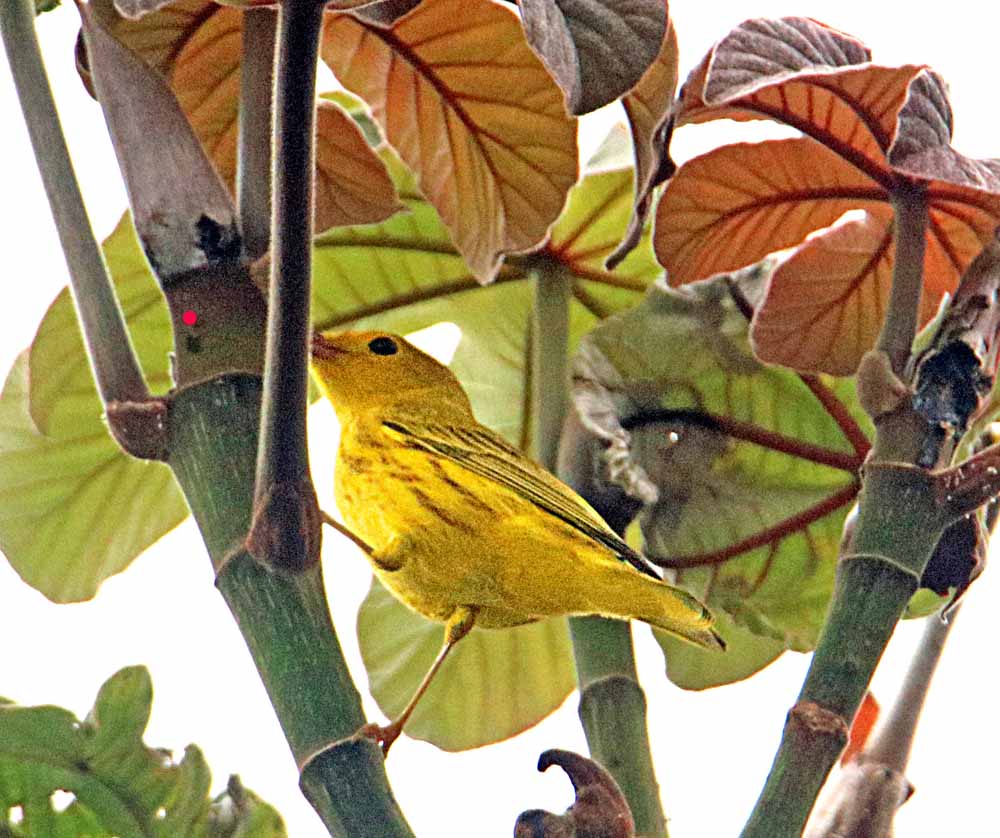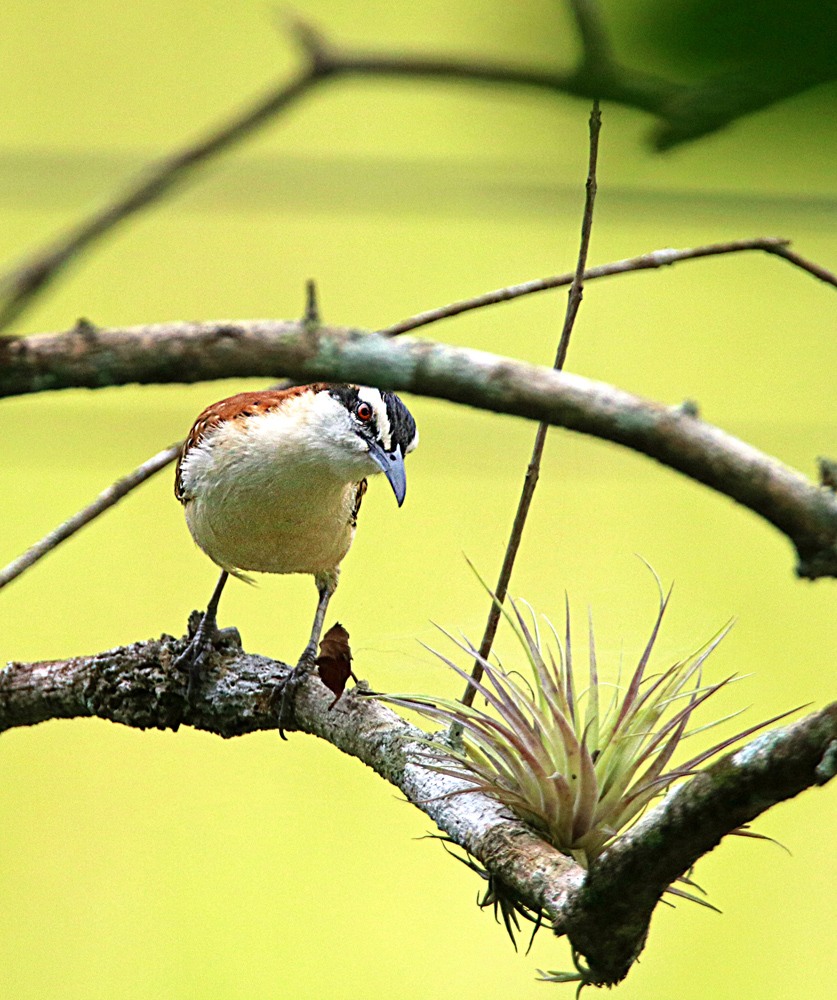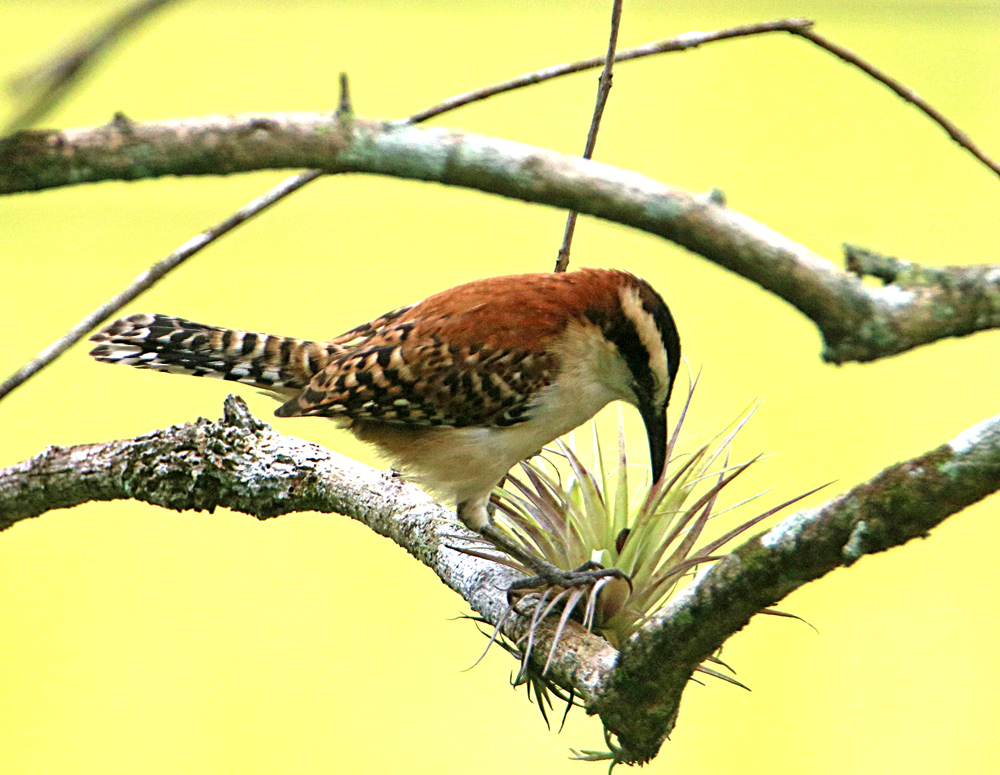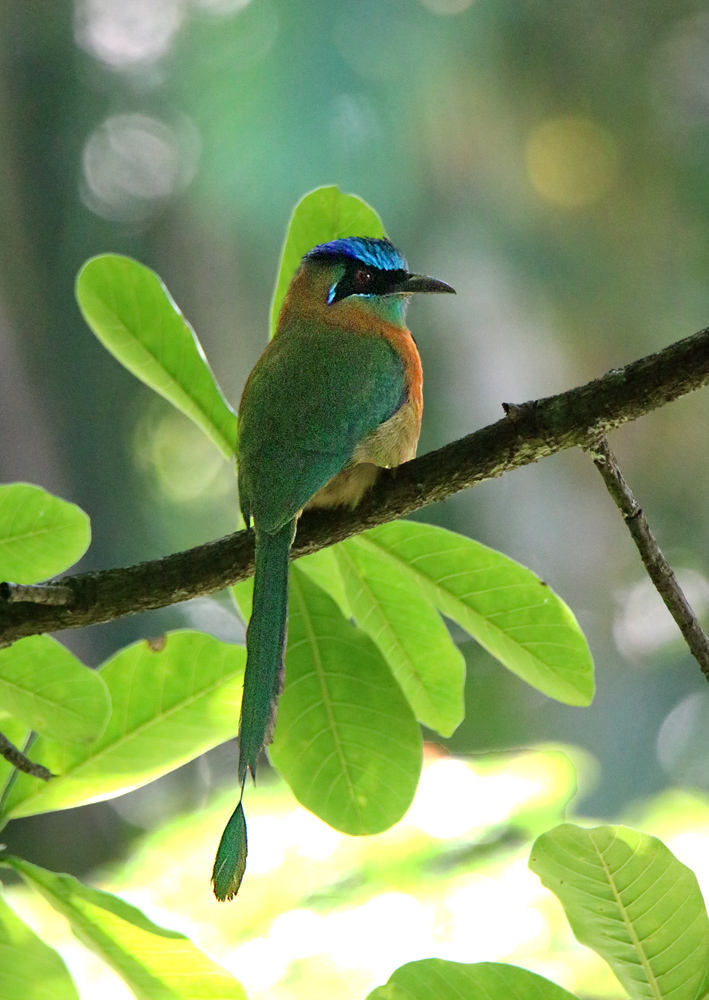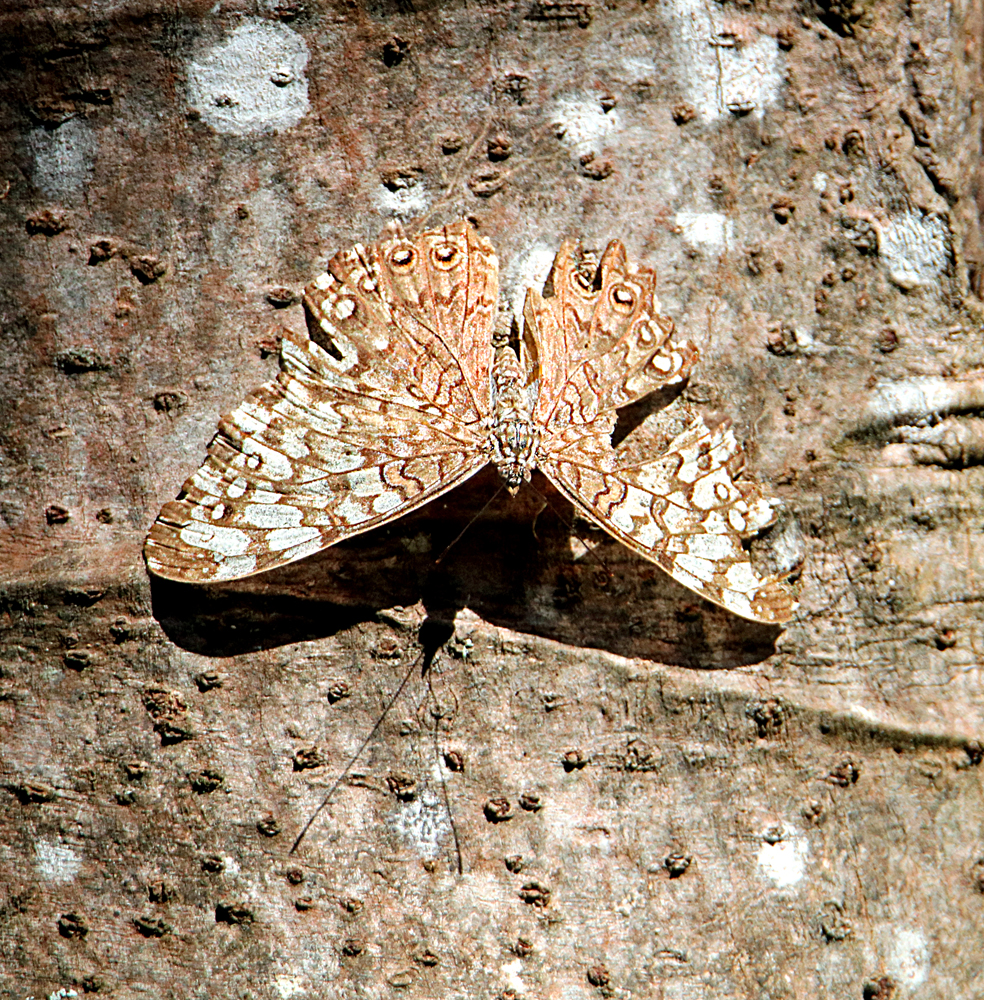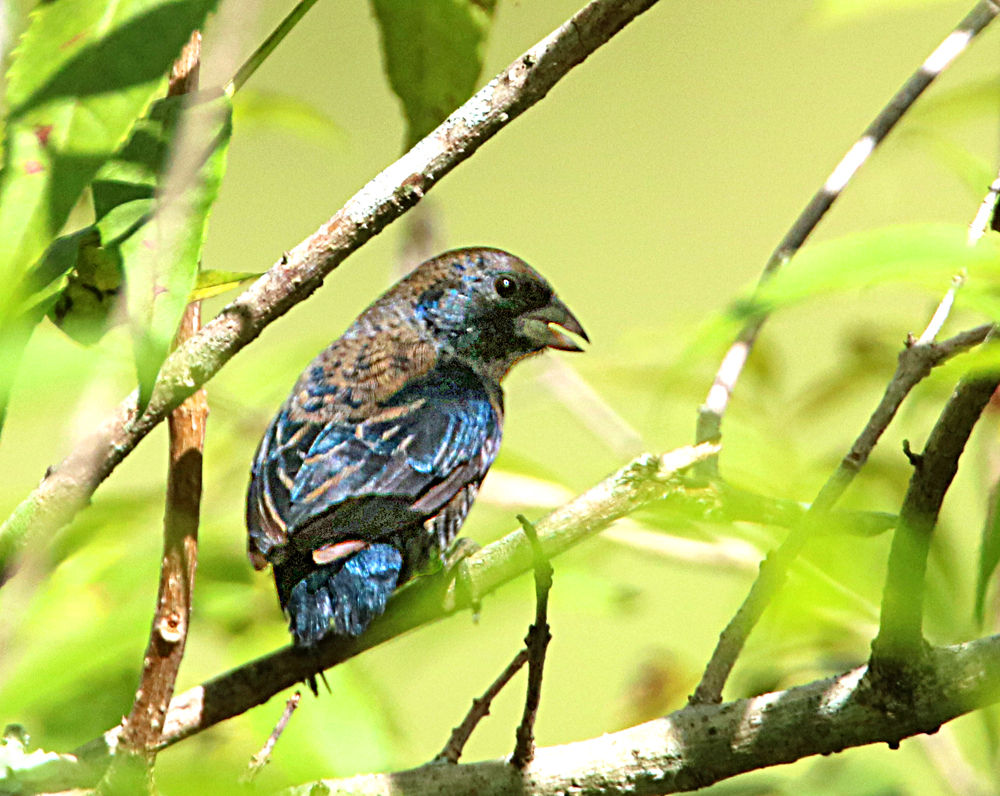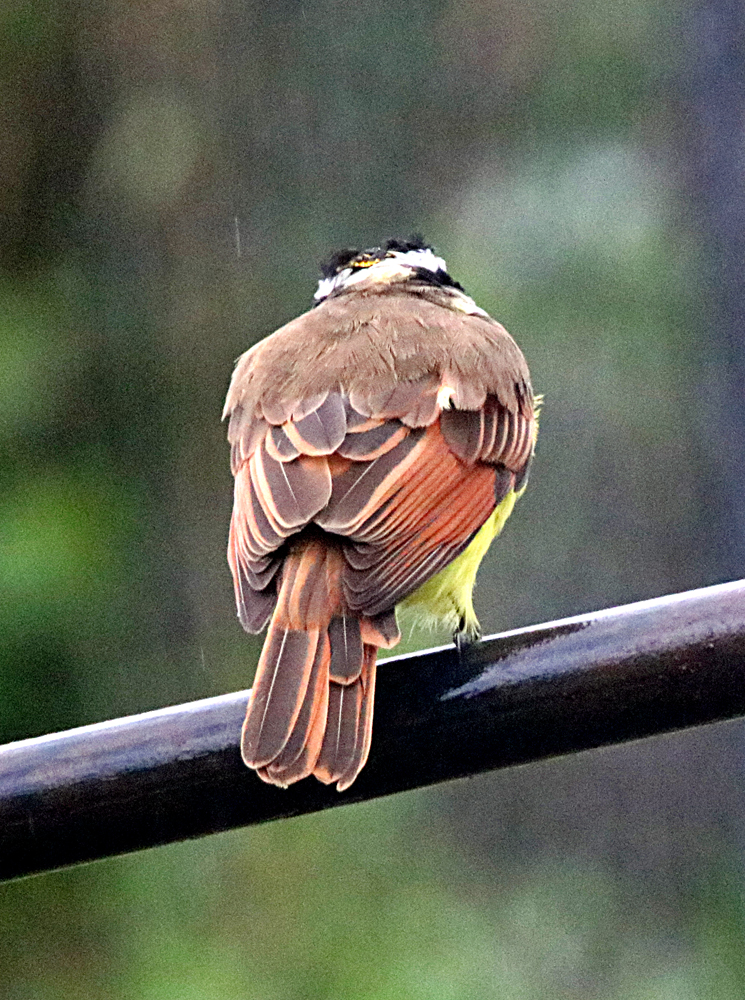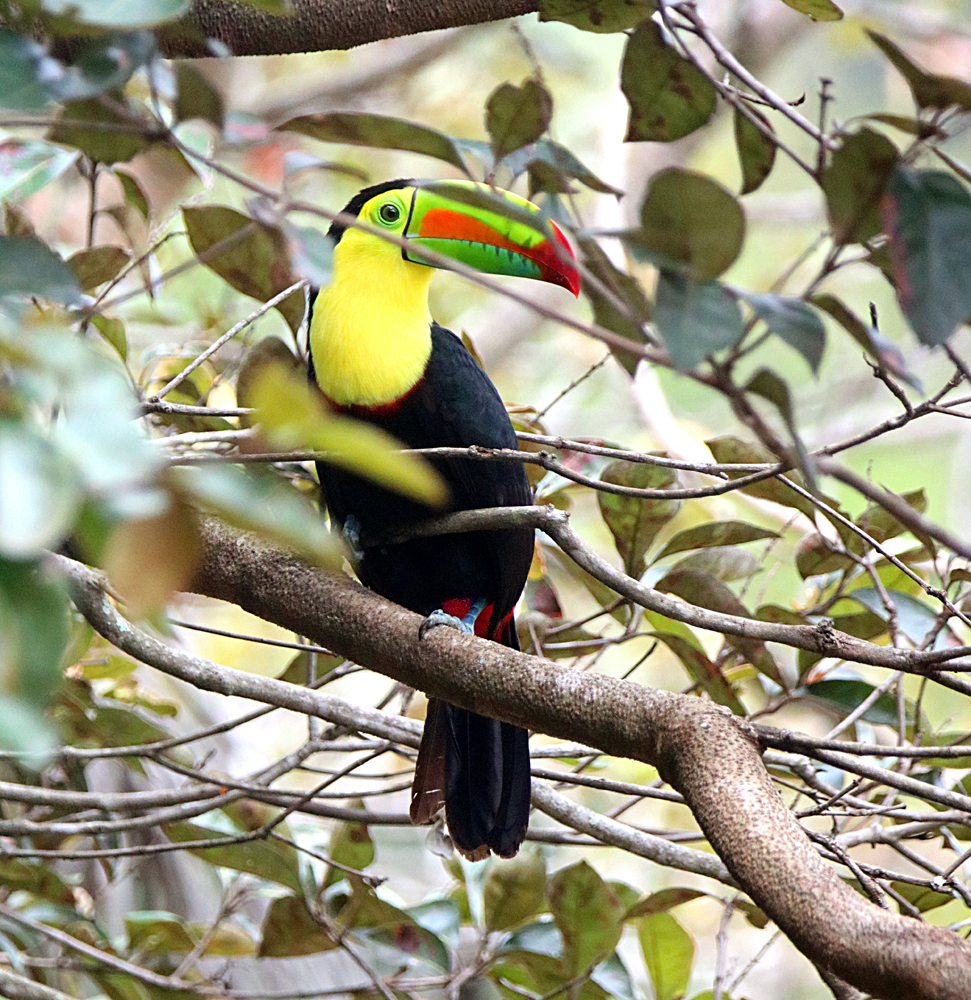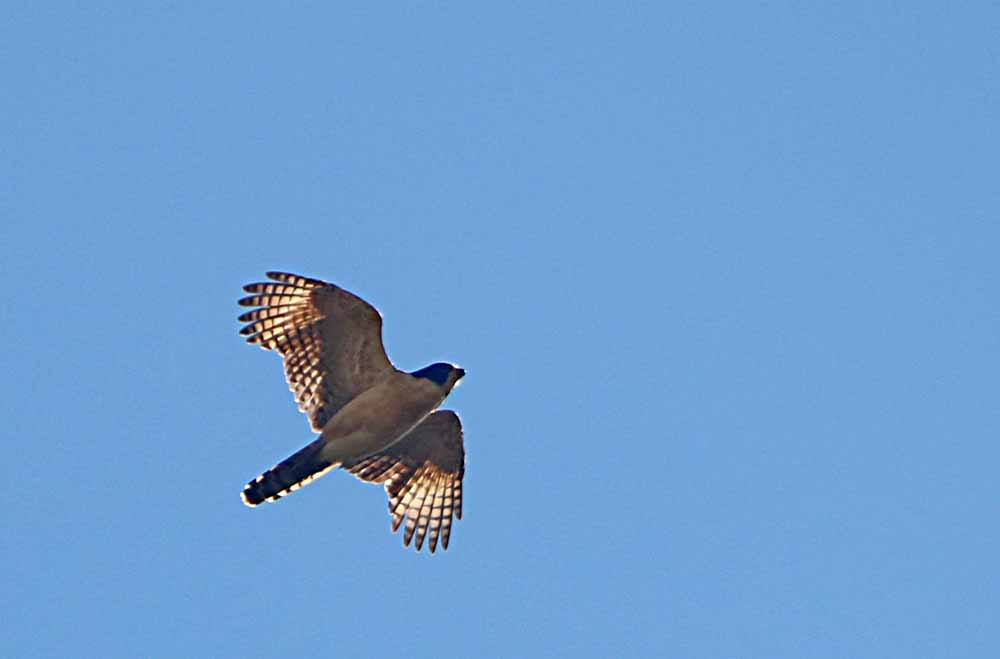One of our two woodpeckers with the “Woody Woodpecker” hair is the Lineated Woodpecker, Dryocopus lineatus, (my gallery link) “Carpintero Lineado” en español, with the Pale-billed Woodpecker being the other big hairdo woodpecker (his whole head is red!). 🙂 This one sensed that my Cecropia Tree is dying and landed first on the trunk then went straight to a dead limb looking for insects to eat. Because of their “pecking/eating” they tend to stay longer in a tree, making them sometimes easier to photograph than other birds, though the overcast afternoon was poor light that day with a glary white sky. 🙁 Here are two shots from this past Monday. See the gallery for more from all over Costa Rica. He is found only in Central & South America, with North America’s most similar bird being the Pileated Woodpecker (linked to my gallery of one seen on Nashville’s Stones River Greenway).
